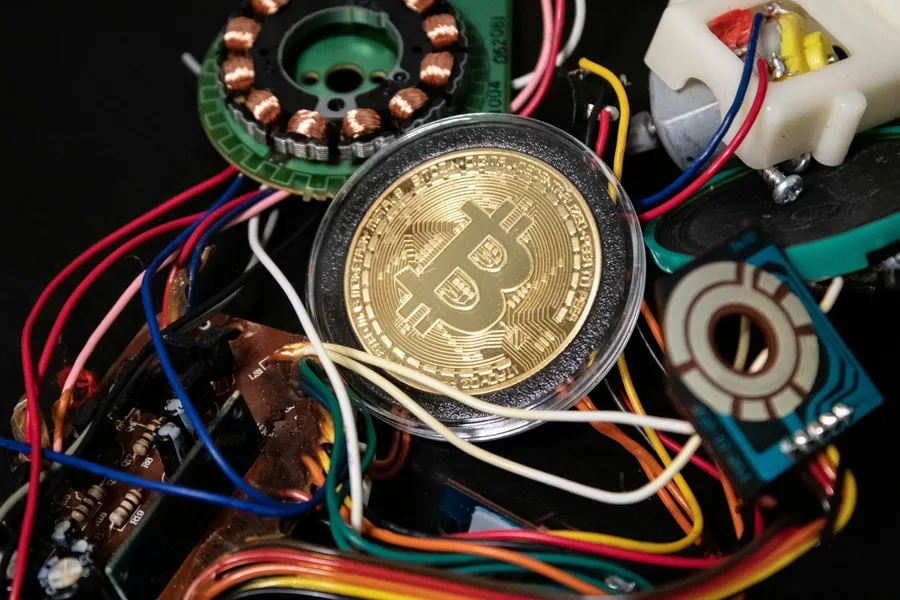How Does Polygon (MATIC) Cryptocurrency Token Work? — Polygon, Ethereum Scalability, Layer 2

Title: The Good, Bad, and Ugly Truth About Polygon’s MATIC: A Security Expert’s Take on Scaling Ethereum
Hey there, blockchain enthusiasts! Valerii Wilson here – your favorite crypto security expert and smart contract auditor. If you’re thinking about jumping into the world of Polygon and its beloved token, MATIC, hold onto your hats because we’re diving deep into this Ethereum scalability solution.
First off, let’s address the elephant in the room: Polygon (formerly known as Matic Network) has gained significant traction recently due to its impressive scalability capabilities for Ethereum. However, like any other cryptocurrency out there, it comes with its own set of unique challenges and risks.
Polygon’s Key Features: A Quick Overview
Before we delve into the nitty-gritty stuff, let me give you a brief rundown of what makes Polygon tick:
- Scalability: Polygon uses Plasma framework and PoS consensus mechanism to process thousands of transactions per second (TPS).
- Interoperability: It allows for seamless communication between different blockchains, including Ethereum, Binance Smart Chain, and more.
- Security: Polygon’s PoS consensus ensures that validators are incentivized to maintain the network’s security.
Now that we have those basics out of the way, let’s get into the real talk – the good, bad, and ugly truth about Polygon and its MATIC token.
The Good: Scaling Ethereum, One Step at a Time
Let’s start with the positive aspect first. Polygon is designed to be an Ethereum scaling solution that aims to resolve two primary issues: high gas fees and slow transaction processing times. By utilizing sidechains (essentially separate blockchain networks) connected through validator nodes, transactions can be processed off-chain while still retaining the security benefits of the Ethereum network.
This approach has led to some impressive results, such as:
- Higher transaction throughput – Polygon boasts over 65,000 TPS during peak loads, compared to Ethereum’s average of around 15-45 TPS.
- Lower gas fees – Users can save up to 99% in transaction costs by moving their operations onto the Polygon network.
- Improved user experience – Faster and cheaper transactions mean more people will likely adopt decentralized applications (dApps) built on top of this infrastructure.
The Bad: Security Vulnerabilities & Scams
However, as with any technology still in its infancy, there are inherent risks that come along with it. Here are a few examples:
- Smart Contract Vulnerabilities: Just last year, an exploit was discovered in the Polygon network’s smart contracts that allowed attackers to steal over $500k worth of cryptocurrency from users. This underscores the importance of thorough security audits before deploying any code on-chain.
- NFT Scams: The rise of NFTs has unfortunately led to an increase in scams. One common tactic involves hackers stealing private keys from unsuspecting victims and then selling those NFTs without their owner’s knowledge or consent.
- Key Leaks & Phishing Attacks: Users need to be vigilant about where they store their private keys, as recent incidents have shown that even experienced investors can fall prey to phishing attacks and key leaks.
The Ugly: Layer 2 Uncertainties
Now let’s talk about the elephant in the room – Layer 2 solutions like Polygon still come with their fair share of uncertainties. For instance:
- Centralization Concerns: Although Polygon aims to provide better scalability and security for Ethereum, some argue that it introduces new points of failure due to its reliance on validator nodes. If these validators become centralized in the hands of a few entities, this could potentially lead to single points of attack or censorship.
- Interoperability Risks: While interoperability between blockchains is a major selling point for Polygon, there remains uncertainty about how these different chains will interact with one another over time.
- Regulatory Uncertainty: As we all know, the cryptocurrency industry continues to evolve rapidly and is subject to changing regulatory landscapes. It’s unclear how governments will approach Layer 2 solutions like Polygon, which may introduce new regulatory challenges in the future.
Conclusion: Navigating the Polygon Ecosystem with Caution
In summary, while Polygon offers some compelling benefits for Ethereum scalability and interoperability, it also comes with its own set of risks and uncertainties. As always, due diligence is crucial when investing in any cryptocurrency – particularly those that are still maturing and evolving.
My advice? Stay vigilant about security best practices, educate yourself on smart contract auditing, keep up-to-date with the latest developments in this space, and never forget: if something sounds too good to be true, it probably is.
Happy hacking!
Valerii Wilson
Seasoned Crypto Security Expert & Smart Contract Auditor









